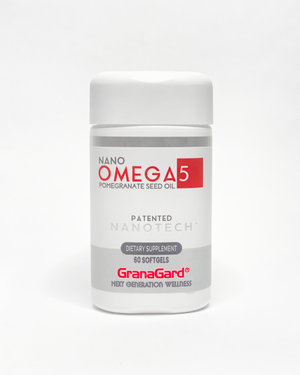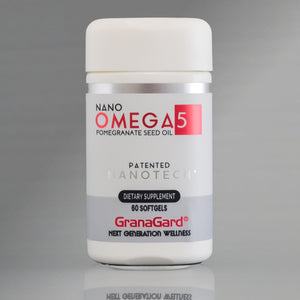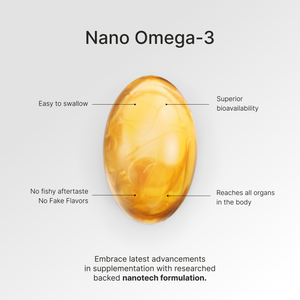According to data from the American Heart Association (AHA), Cardiovascular Diseases claim more lives in the United States each year than all forms of cancer and chronic lower respiratory diseases combined. Recent data shows that heart diseases continue to be the number 1 cause of death in the country. Approximately, every 40 seconds someone in the United States suffers from a myocardial infarction, but there is a way to decrease the risks of being part of those statistics.
Risk Factors
Several risk factors associated with cardiovascular diseases have been established, including: high total cholesterol, homocysteine, and triglycerides, hypertension, diabetes, and reduced levels of HDL cholesterol. Many of these risk factors are influenced by diet.
Observations That Now Save Lives
As early as 1944, Dr. Sinclair described the rarity of coronary heart disease among the Greenland Eskimos, who consumed a diet rich in fish, seals, and whales. Over 40 years ago, Doctors Bang and Dyerberg reported that despite the low consumption of fruits, vegetables, and complex carbohydrates in exchange for a diet rich in saturated fats and cholesterol, serum cholesterol and triglyceride levels were lower in the Inuit of Greenland than in younger residents of Denmark. They also demonstrated a lower risk of myocardial infarction. These and similar observations sparked interest in the potential benefits of increased fish intake in the diet, particularly the benefits of Omega-3 polyunsaturated fatty acids for cardiovascular health.
Omega 3 Fatty Acids

The term Omega 3 (or n-3) is a structural description of a specific family of polyunsaturated fatty acids (PUFAs). The n-3 descriptor denotes the location of the first double bond of the fatty acid from the methyl end, which is found between the third and fourth carbon.
Omega-3 polyunsaturated fatty acids must be obtained from dietary sources. The simplest Omega polyunsaturated fatty acid is alpha-linolenic acid (ALA), which is found in plants. After ingestion, ALA can be metabolized, predominantly in the liver, to form Eicosapentaenoic Acid (EPA). Then, EPA undergoes further metabolism through multiple enzymatic actions and beta-oxidation to produce Docosahexaenoic Acid (DHA). The conversion of ALA to EPA and eventually DHA is generally poor in humans, hence the importance of consuming marine products or Omega-3 supplements.
Cardiovascular Protection
Omega-3 fatty acids: Eicosapentaenoic Acid (EPA) and Docosahexaenoic Acid (DHA), are found in seafood and especially in fatty fish. Long-term prospective studies have consistently shown an association between increased fish intake, fatty fish, and marine fatty acids (EPA + DHA) or higher levels of EPA and DHA in the body with a lower risk of developing cardiovascular diseases, especially coronary heart disease, myocardial infarction in the general population. This cardioprotective effect of EPA and DHA is likely due to the beneficial modulation of known risk factors for cardiovascular diseases.
Omega 3 confers cardiovascular benefits through the reduction of triglycerides, antioxidant, anti-inflammatory, and antiarrhythmic effects; vasodilation, reduction of blood pressure, improvement of arterial and endothelial function, favorable autonomic tone, and reduction of platelet aggregation. In particular, triglyceride levels are a historically well-studied independent risk factor for coronary heart disease. Omega-3 supplementation in the diet has been shown to reduce triglyceride levels in a dose-dependent manner, so that 3 to 4 g/day of eicosapentaenoic acid (EPA) or a combination of EPA and docosahexaenoic acid (DHA) reduces blood levels by 20 to 50% in cases with high triglycerides.
The intake of foods enriched in Omega-3 polyunsaturated fatty acids is the option for reducing risk factors for cardiovascular diseases. The problem is that for most of the population, the geographical location of their residence makes it difficult to have marine foods several times a week; unfortunately, we are not Inuit. Hence the importance of dietary supplements with Omega-3.
Overcoming Obstacles with Nanotechnology
Like all fatty acids, Omega-3 is lipophilic, meaning it dissolves very well in a fatty environment but not in water. Try diluting the contents of a softgel capsule of any Omega-3 in water and you will see that it is impossible.
As we have seen, to exert its cardioprotective action, Omega-3 must act on different organs and at different levels. Our cells have different compartments and structures, some are lipid (fatty) and others are aqueous, so the proper dissolution and distribution of a substance between these compartments would be given by its lipophilic or hydrophilic character.
The extraordinary news that multiplies the effectiveness of Omega-3 as a supplement for the prevention of cardiovascular diseases is the transformation through nanotechnology of Omega-3 into a nanoemulsion, that is: an Omega-3 that can be dissolved in both water and oil, is hydrophilic and lipophilic, being able to reach all cellular compartments, in all organs. This nanoformulation allows it to achieve 4 times the absorption and potency of conventional Omega-3.
Now you can truly help prevent your cardiovascular risks and avoid being part of lamentable statistics. Start protecting yourself today with Nano Omega-3 from GranaGard®!





